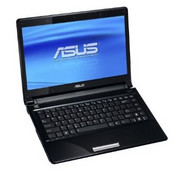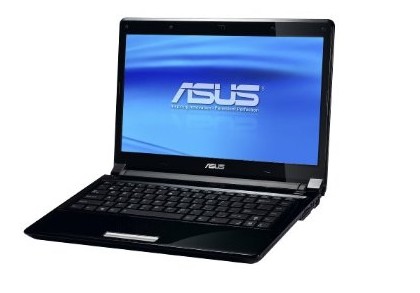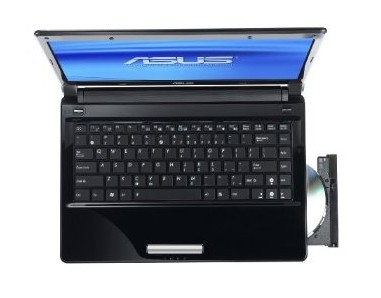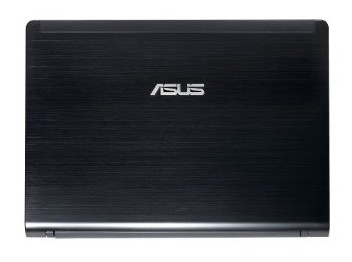Asus UL80Vt-A1
Specifications
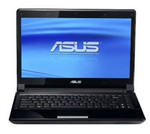
Price comparison
Average of 4 scores (from 5 reviews)
Reviews for the Asus UL80Vt-A1
Source: Laptop Mag
 Archive.org version
Archive.org versionOf the numerous 14-inch Optimus notebooks we've reviewed so far, the ASUS UL80Jt stands out as one of the best. For $869, you get excellent endurance for a system this size without sacrificing too much performance. If you're looking for something with a little more graphics muscle, then the Gateway ID49C08u ($849) is the better option. But if all-day mobility trumps gaming prowess, then the UL80Jt is the way to go.
Single Review, online available, Medium, Date: 08/18/2010
Rating: Total score: 80%
Source: PC World
 Archive.org version
Archive.org versionAsus has its work cut out for it in finding a market for the UL80Vt-A1. This ultraportable laptop has a higher price ($849) than many similarly specced competitors, though it's in the same ballpark as its $800 stablemate, the Asus UL30A. So how does Asus justify the price tag? The UL80Vt-A1 covers its base respectably. Strong battery life and surprisingly responsive performance give Asus's latest rig two solid legs to stand on. The only major drawbacks here are the price and that wretched mouse.
Single Review, online available, Medium, Date: 11/23/2009
Rating: Total score: 60%
Source: PC Mag
 Archive.org version
Archive.org versionWhen laptops equipped with consumer ultra low-voltage (CULV) processors first came on the market, they tended to be minimalist in design—much like the first netbooks—and focused on having a sleek form factor more than anything else. Like netbooks, these laptops eventually evolved into larger, more capable systems. Indeed, the first CULV laptops were razor thin, like the MSI X340, Acer Aspire Timeline AS3810T, and the Editors' Choice ASUS UL30A-A1. The CULV-equipped ASUS UL80Vt-A1 laptop is loaded with lovable features, including switching graphics technology, a huge battery, and a metallic design.
Single Review, online available, Medium, Date: 11/02/2009
Rating: Total score: 90%
Source: Notebookreview.com
 Archive.org version
Archive.org versionThe ASUS UL80Vt is a 14” thin-and-light laptop with 10 hours of battery life, an overclocked processor, and switchable Nvidia graphics. Read on to find out if this battery-friendly powerhouse is worth your money. The ASUS UL80Vt is a notebook we really want to like but has too many drawbacks to overwhelmingly recommend. While it has a stellar ten-hour battery life, sleek design, and good overall performance, its weak build quality, abysmal keyboard, and unfriendly touchpad prevent us from signing its praises.
Single Review, online available, Long, Date: 11/01/2009
Rating: performance: 80% display: 50% mobility: 80% workmanship: 30% emissions: 90%
Source: Laptop Mag
 Archive.org version
Archive.org versionThis lightweight powerhouse combines good graphics punch with over 9 hours of battery life.
The ASUS UL80Vt costs more than other ULV thin-and-light notebooks, but it’s worth the extra money for the better graphics performance. If you’re looking for something lighter and don’t need an optical drive, you may want to consider either the 4.4-pound Dell Studio 14z or the 13-inch ASUS UL30A, which weighs only 4.0 pounds. But if you want all-day battery life and good performance in a sleek 14-inch system, the UL80Vt is a very good choice.Single Review, online available, Long, Date: 10/29/2009
Rating: Total score: 80%
Comment
NVIDIA GeForce G210M: The GeForce G210M is the successor of the G110M and also possesses 16 shader cores. Because of the 40nm process, the chip is clocked much higher but is still staying in the same power envelope.
Only some 3D games with very low demands are playable with these cards.
» Further information can be found in our Comparison of Mobile Graphics Cards and the corresponding Benchmark List.
Intel Core 2 Duo: This is the Core Duo and Core Solo successor with a longer pipeline and 5-20% more speed without more power consumption. As an addition to the Core Duo design there exists a fourth decoder, an amplified SSE-unit and an additional arithmetical logical unit (ALU).
The Core 2 Duo for laptops is identical to the desktop Core 2 Duo processors but the notebook-processors work with lower voltages (0.95 to 1188 Volt) and a lower Frontside bus clock (1066 vs 667 MHz). The performance of equally clocked notebooks is 20-25% lower than Desktop PCs because of the lower Frontside bus clock and the slower hard disks.
SU7300: Slow clocked dual core processor with a low TDP of 10 Watt.» Further information can be found in our Comparison of Mobile Processsors.




